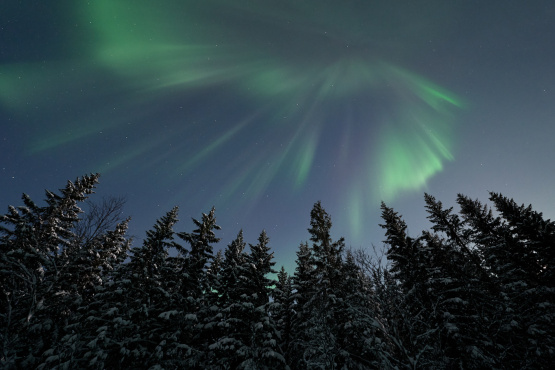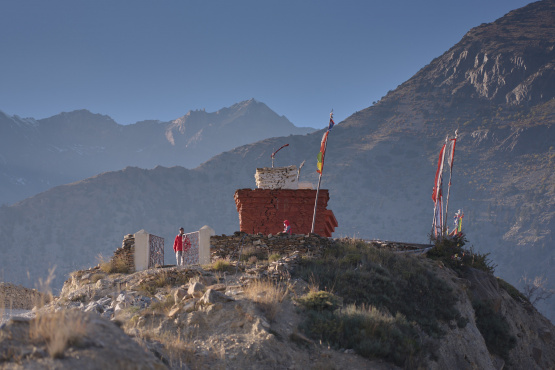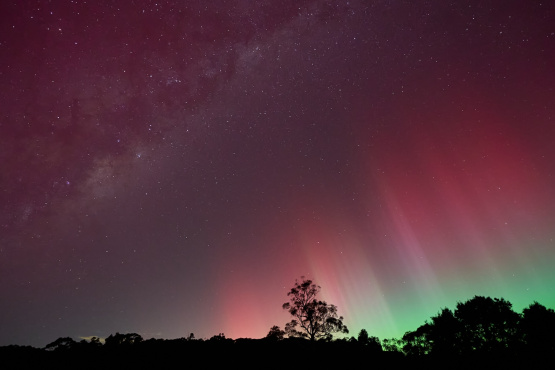“We'll get you back alive.” That was the promise from Expedition Leader Nathan Russ, a casual remark that instilled as much concern as it was intend to dispel. Until that moment I hadn't doubted a safe return, but was I taking too much for granted?
Ahead of us lay days of open ocean, and the Southern Ocean at that. If you sail far enough south the relentless winds and rolling waves abate, leaving relatively calm waters around the land mass of Antarctica. Until then you're sailing through a planetary washing machine pitted with a few minuscule islands that offer little if any respite from the weather. Aboard a recommissioned Russian scientific vessel there is room for 50 passengers and 25 crew; little more than a cork bobbing in the water.
Macquarie Island was our destination, a lonely crop of rocks and beach that takes a solid three days of sailing to reach from the tip of Tasmania. Longer still on a commercial voyage departing from New Zealand via the chain of Sub-Antarctic Islands below Invercargil. Such isolation is a magnificent thing. There are no air strips to evacuate a traveller with a broken leg, it's too far from any other dry land for a helicopter to reach and more days than not the weather is typically too harsh for a ship-board helicopter to land anyway.
If you want to get in or out of Macquarie Island you have to sail through the Southern Ocean. In any given year just a few hundred people will make the journey and experience landing on the beaches of Macquarie.
And when you arrive you're never alone. Hundreds of thousands of King Penguins are jammed onto a narrow strip of beach, dozens of Elephant Seals do battle for territory as they crash tonnes of flesh against each other and a dazzling armada of Royal Penguins dart in and out of the surf like British backpackers at Bondi. Life clings to the edge of the island and thrives against the elements. I cling to my camera bag and struggle to decide which way to shoot first.
I live for these moments. Beneath layers of rain sodden nautical gear, a decades old polar fleece and recycled gumboots my heart is pounding with waves of excitement. The gumboots were especially well considered, letting me step backwards into the surf while penguins march past me and disappear into the water. After all those days at sea I wouldn't want to let a little thing like wet feet get in the way of a photographic frenzy.
The Royal Penguins barely reach the top of my boots, playful little creatures that pack all the personality of a bigger bird into their chubby little bodies. The King Penguins are taller, more elegant in their movements and have an appearance of being dressed in a formal dinner suit instead of a clown costume. I doubt I'm in danger of offending any Royal Penguins with that assertion, in fact clowns are probably a compliment.
As a traveller to Macquarie Island you're never alone from other people either. Sort of.
Unless you're a Park Ranger or Research Scientist there is very limited access to the greater wilderness area and the shore landings are escorted at all times by rangers from the base. For the most part the Park Rangers set the boundaries on where we can wander, yet we enjoy plenty of opportunity to spread out and meet the creatures one-on-one. An entire cruise ship alighting zodiacs together sounds like an invasion, but in fact fifty people spread across the beach with tens of thousands of penguins is a very generous ratio.
There are plenty of penguins to go around.
We think of penguins as being fans of Antarctic ice, but in fact they prefer rocks and pebbles. Macquarie is heaven for my flippered friends. King Penguins, Royals, Rockhoppers and Gentoos take full advantage of the nesting sites on land and the feeding frenzy off shore.
I've come here for the penguins, and the King Penguins in particular. From the moment I step off the zodiacs and onto the beach the Kings take notice and wander past with interest. Park rangers and expedition crew have told me a dozen times to keep ten metres distance from the wildlife, but often wildlife will have their own ideas and come in close to examine the new-comers on their turf. I'm not sure what gave me away. The fact that I'm several times their height, the bright red jacket that makes me almost visible from the moon or the repetitive click and thud of my camera.
Penguins have yet to catch on to the digital photography phenomena but they are evidently curious.
Standing next to them on land they look small and diminutive instead of regal and grand, like a characterisation of the images we see in magazines. You have to lie down flat on the beach before a King Penguin can truly lord it over you. Once you drop down to the height of their gaze a compelling urge for curiosity takes over. Unsatisfied with an eye-ball examination I become the subject of a taste test as well. It looks potentially dangerous when a powerful pointed beak is thrown into your foot, but they peck with interest rather than aggression.
Having satisfied their curious beaks the Kings make a few gurgling noises among themselves and the head on down the beach.
Penguins always seem to have somewhere to be, and the Royal Penguins give the impression they are terribly late to be there. In between colonies of King Penguins a narrow patch of beach at Sandy Bay has become a multi-lane highway for the Royals, and what they lack in physical stature they make up for with personality. The noise is intense with over a thousand foot-high drama queens competing for attention. Couples chat with each other in acts of pair-bonding, neighbours bicker about boundaries between nest sites, males gather up pebbles to impress their mates and rogue romantics sidle up to females to try their luck before being chased off by irate partners.
On a sunny afternoon at Macquarie Island I watch waves of Royals come hopping down the beach to dunk in the ocean and cool off. They charge head first into the surf with grubby bellies and stained feathers, and re-emerge minutes later refreshed and rejuvenated. It becomes a social outing as rafts of Royals chatter on the water, seemingly unconcerned about the seasonal arrival of Leopard Seals to the island. The more commonly sighted Elephant Seals on these beaches prefer to dine on squid than flippers.
Royal Penguins are part of the crested-family that includes Rockhoppers and Macaroni's, and their wild tufts of yellow feathers above the brow adds to their clown-like appearance. Each carries their crest with a different manner, emerging from the ocean with the crest slicked back like a flat-footed James Dean, flinging the salt-water free with a shake of the head, or hiding amongst the landed seaweed which happens to be the exact same bronzed-yellow colour.
Late December is a good time of year to be in the Sub-Antarctic Islands. You still get a chance to see penguin chicks, and lots of them, and this far north of the south-pole they're well advanced.
Buckles Bay has a healthy population of Gentoo Penguins and their chicks have reached an age when they can be truly demanding on their parents. Gentoo chicks will go to great lengths to be annoying to anyone else's parents too, the imperative of filling their stomach over-riding penguin etiquette as they unsuccessfully beg from strangers. Unlike the Royal Penguins which can only be found on Macquarie Island, Gentoo are very common throughout the Antarctic region. They are tolerant of the warmer conditions at Macquarie Island yet also able to survive further south in the colder latitudes where the more specialised Adelie Penguins thrive on the abundant Antarctic ice.
King Penguin chicks dominate the landscape at Macquarie in December, with a colony in excess of two-hundred thousand Kings on Lusitania Bay and many thousands more around the island. In contrast to the elegant dress suit worn by adult Kings, the chicks run about in their brown fluffy penguin pyjamas. Where the colony gathers to herd chicks together the beach looks like a kindergarten slumber party.
I sat down on a tussock at Sandy Bay for a while with one of the park rangers, and we watched the creche of King chicks go about their day. A few chicks wander about harassing strangers for a feed, but most wait patiently for their dutiful parents to return with fresh fish. Identification of mother and child, or father and child, is a small miracle with hundreds of near identical chicks huddled into a small cove. But they manage with the help of voice recognition and a quick exchange of squawks and squeals reunites the family. Chicks have a way of letting parents know that food is required, by persistently pecking and jabbing at the adults beak until a bolus of partially digested pulp is regurgitated.
Spending some time with the wild creatures is greatly enhanced by the presence of experienced rangers. Macquarie Island falls under the management of the Tasmania Parks & Wildlife Service and the experience of the rangers is evident. What at first was a sea of grey and brown penguins becomes an intricate network of organisation when there's a zoologist on hand to point out observations. My park ranger noted Skuas trying their luck in the colony, loitering out of pecking range in search of a snack and making off with a penguin eggs when the chance arises.
Having spent several hours on the beach with the Kings it was only then I realised that a good many of the adults were in fact caring for eggs rather than chicks. They stand patiently in one spot with their feet clamped together below the egg and a belly of feathers rolled over the top to keep it all warm. Every so often they lift up their stomach, gently tap the egg with their beak and then return to the belly-cradling position.
Rangers are a necessity on Macquarie Island and far from being an obstacle to exploration they in fact make it possible for travellers to experience close encounters with the wildlife. By defining which parts of the Macquarie Island habitat visitors can roam, how to interact with the wildlife without causing them stress and restricting how many people at one time can come ashore the unique ecology of the island can be protected without being hidden away from the public. You can't have cruise ships landing passengers anywhere they like and disturbing the breeding colonies, for the sake of the animals and for the sake of the travellers themselves.
It's charming to be stalked by an over curious King Penguin and suddenly have a beak looking up at your nose, less appealing when it's a fully grown Elephant Seal who wants you off his patch of sand. The ten metre rule is a good one. I watched several territorial confrontations between male Elephant Seals and would advise keeping a healthy distance from their teeth and tonnage.
Aside from being a passionate source of information on Sub-Antarctic ecology the rangers also facilitate research on better management and protection of the islands wildlife. Rabbits, rats and mice have caused incredible damage to the natural habitat here over the last decade and a great deal of work is needed to restore the environment. Ironically the history of pest control for introduced species at Macquarie Island is a tale of good intentions with unforeseen effects. Rabbits were reduced in the 1970s which led to feral cats increasing their prey on migratory birds. Then the cats were eradicated a decade ago only to result in rodent and rabbit populations increasing to devastating proportions.
The problem with the remaining introduced species is their ability to destroy tussocks and other native flora that have evolved on the island. Vegetation that provides vital habitats for sea-birds is eaten by rabbits before it can mature while the seeds are harvested by rodents and stored for winter. The final outcome is exposed slopes and an increasingly denuded ecosystem. Even the tall thick Tussock Grass that young seals hide amongst have been visibly effected by the pests.
In the winter of 2010 the impact of introduced species on Macquarie Island is being challenged by the largest pest eradication project ever undertaken in the world. The federal government is funding an initiative to simultaneously remove rabbit, rat and mice populations across the entire island. The model for such an ambitious project was set by the New Zealand government in 2001 when they used helicopters and poison baits to clear the rats from Campbell Island. Some of the same team members from the Campbell Island project will be working on Macquarie Island this winter.
Pete Tyree was a ranger and logistics officer for New Zealand's Department of Conservation during the Campbell Island eradication, and was present on my cruise to Macquarie Island as a crew member. Pete has seen first hand just how dramatically the habitats on Campbell Island have improved since the rodents were removed. Vast mountain sides are once again covered with dense Tussock Grass and the Sub-Antarctic Megaherbs, providing the ideal environment for nesting Albatross pairs.
Macquarie Island also has a rich variety of Albatross species, although expedition cruise passengers are more likely to see the birds while making passage at sea than standing on a beach. Albatross prefer to nest high up on cliffs and exposed knolls where strong winds give them an easy take-off.
The habitat decline on Macquarie Island is evident to the experts but so is the wild beauty. In Pete's own words, “Macquarie Island is just an amazing place. From a photographer and conservationist point of view it's a paradise in spite of its state of decline from the rabbits. The depth of interaction with the penguins down here was life altering for me.”
After spending a week sailing south from New Zealand my first sight of Sandy Bay was exhilarating. King Penguins and Elephant Seals dominate the shoreline, rugged geological features add a touch of drama to the scenery and alighting our zodiac to stand on the volcanic black sand made the entire journey worthwhile. And lets be brutally honest here, the journey is a unique challenge of its own.
To reach Macquarie Island the commercial expedition cruise ships hop their way across the New Zealand Sub-Antarctic Islands. The Snares, Auckland Islands and Campbell Island provide way-points and occasional calm shelter. The passage from Campbell Island to Macquarie is no less than a day with good conditions, and possibly double that when the Southern Ocean is kicking up a fuss.
Very few cruise ships head down this part of the world, it's too remote and the journey often regarded too rough for the comfort of passengers. My south-bound ship was one of the “Professor Class” Russian built research vessels, now named The Spirit of Enderby but still crewed by a team of Russian sailors. It's a small ship with room for 50 passengers on-board and a fleet of five zodiacs stowed on the stern to facilitate shore landings.
Our Expedition Leader was Nathan Russ, who at the age of just 25 is vastly more experienced than his age would suggest. He had already spent Christmas in the Southern Ocean for 15 of those 25 years, and Nathan follows in the adventurous footsteps of his father Rodney Russ who founded the family business in expedition cruising.
From the very start of the journey Nathan talked about a “successful expedition”, as though this was something we shouldn't take for granted. He followed up with the memorable declaration of, “We'll get you back alive.” And he meant it. Man does not belong down here, not without extraordinary resources and a large bag of sea-sickness tablets.
The night before we pulled alongside the shores of Macquarie Island was the roughest seas for our entire journey. I'd grown accustomed the pendulum swing of the vessel as it rode sideways through 8 metre swells, was coping better than most on the ship to avoid the effects of sea-sickness and had even found a way to stop myself sliding up and down the length of my bunk while I slept. The only thing keeping me awake was the calamitous crashing of massive waves landing on the bow.
The next morning conditions were calm enough to wander onto the top deck, above the captain's bridge where nothing but navigation towers interrupt the view. Nearly everything up here is painted white, in contrast to the generous sprinkling of seaweed that had appeared on deck during the night. At least one of those waves in the darkness had gone clear over the bridge.
Have no doubt that a nautical expedition in the Southern Ocean is a journey into the world's most dangerous waters. It gets rough down here, really rough. Some of the storms and swell we hit head-on with our little Russian ship made my last journey though the Drake Passage look like a ride at Disneyland. Only one other passenger vessel had been down here in the previous month, and she turned tail for calmer seas when the forecast turned serious. Not The Spirit of Enderby however. The promise of manic penguins on the beach and hot scones at the research base was a promise that Nathan intended to keep.
The nature of expedition cruising requires that weather conditions determine landings rather than the itinerary, so for any given arrival there is no certainty about which beaches can be accessed with a zodiac landing. In fact there are no guarantees that you will land at all. We got ashore twice in two days on our visit to Macquarie, the first time to wander along Sandy Bay in the afternoon sunshine, and the second time we spent half a day visiting the research base and resident wildlife across the isthmus at Buckles Bay.
After 12 days of sailing between Sub-Antarctic Islands I tallied just 6 hours on shore with sunshine to brighten my photos. Blue skies and rain clouds come and go with very little warning, so moments are fleeting. As a travel photographer you have to make the most of those precious few hours and spend the rest of the journey enjoying the remoteness. I stood on the rear deck of our ship and took photos of Albatross gliding over waves, took photos of waves spilling over other waves and took photographs of other passengers taking photographs.
Our cork in the ocean bobbed up and down relentlessly for those 12 days and delivered us safely to Macquarie Island and safely home again. Just as Nathan Russ promised me. And I'd go back and do it all over again if I got the chance. There are tens of thousands of penguins I think I forgot to photograph in Sandy Bay, and around the corner at Lusitania Bay there are more than one-hundred thousand King Penguin breeding pairs that I haven't even met yet.
I don't usually like crowds in World Heritage areas but in this case I'll make an exception.

Keep Reading
Join Ewen's newsletter for monthly updates on new photography articles and tour offers...Subscribe Here









